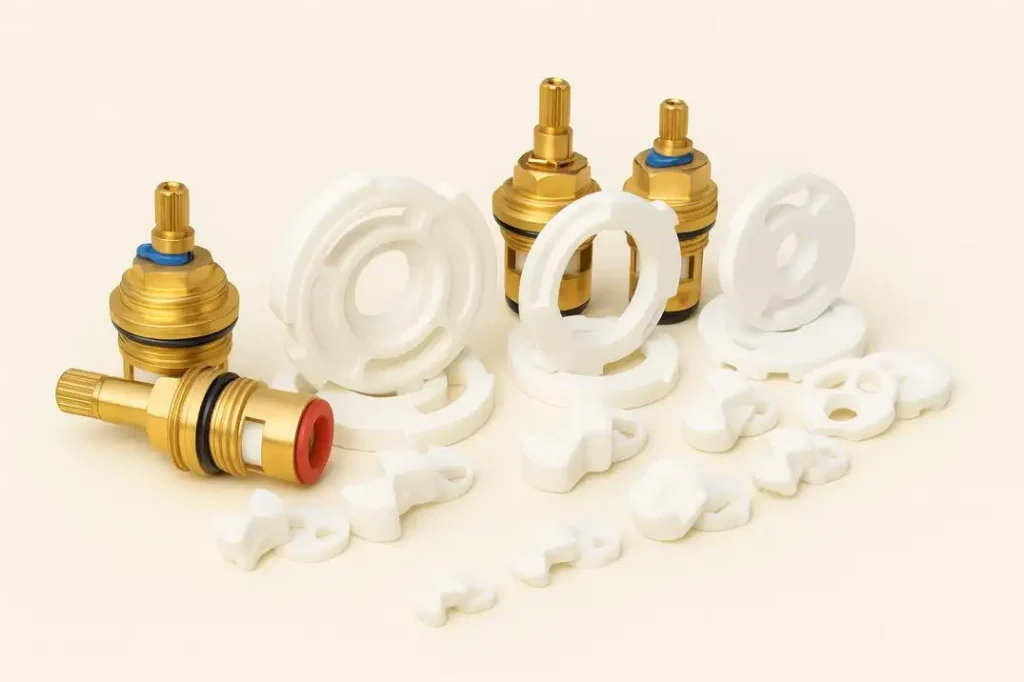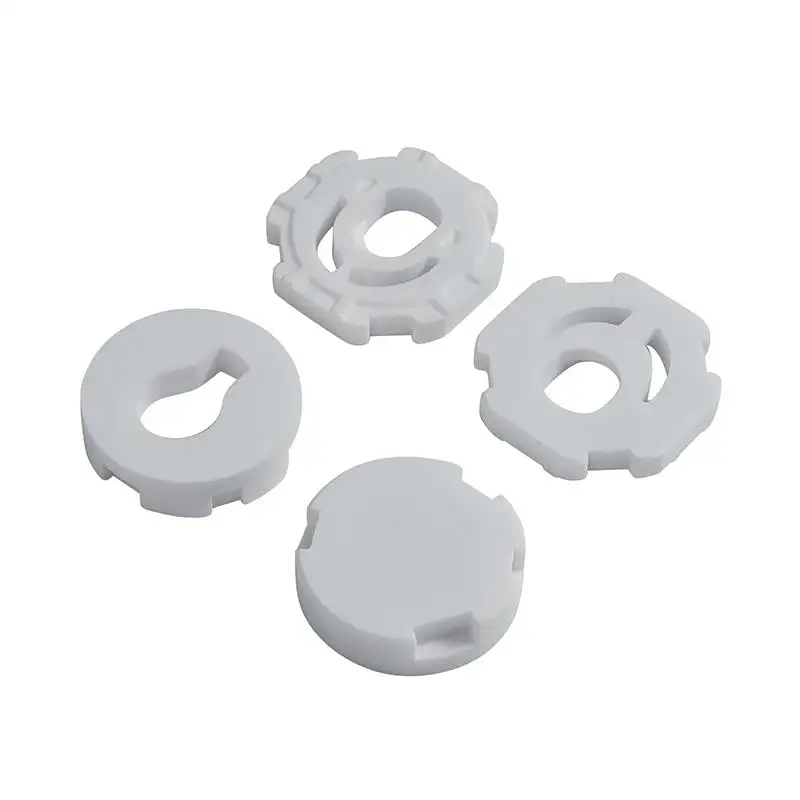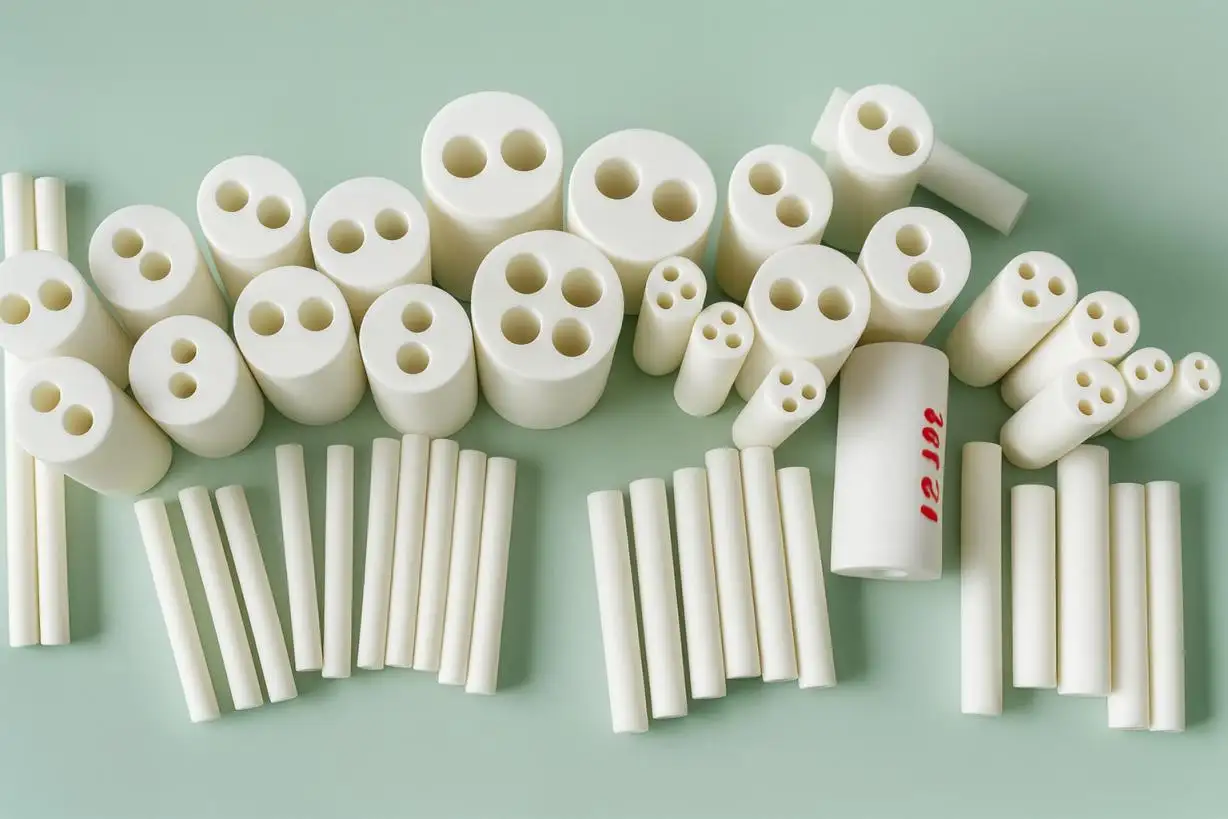How Advanced Ceramic Valve Disc Solves Abrasion Problems
An Advanced Ceramic Valve Disc is a small part, but it solves big problems in systems that face constant friction and harsh media. It is made from high-hardness ceramic and used in valves for water treatment, chemical lines, steam systems, and other demanding environments. Its job is simple: keep flow stable and prevent wear. Yet many industries still struggle with abrasion that causes leaks, downtime, and rising maintenance costs. So how does this tiny component overcome challenges that defeat metal and plastic parts? Let's take a closer look.

Why Abrasion Wrecks Valves - And How We Stop It
Abrasive particles act like tiny cutting tools. Each time a valve opens, turbulence pushes those particles across the sealing face. On metals, the surface scuffs, then pits, then leaks. Soft polymers deform or swell and lose accuracy. Temperature swings and corrosive additives make the damage worse by attacking the surface between cycles.
An Advanced Ceramic Valve Disc breaks that cycle. Alumina and zirconia ceramics are extremely hard, chemically inert, and dimensionally stable. That combination resists cutting, scratching, and chemical attack, even while the valve throttles flow thousands of times per day. The surface remains smooth, the geometry stays true, and the seal keeps sealing.
From UPCERA's manufacturing floor to your line, the result is practical: fewer leak paths, longer service intervals, and predictable performance under heat, cold, or caustics. In harsh water treatment, power generation, and chemical processing, that reliability isn't a luxury - it's what keeps production and compliance on track.
✅ The Pain Points We Designed For
- Chronic leakage after short run time in abrasive media
- Rising maintenance cost from frequent seat/disc replacements
- Unstable flow control due to worn sealing faces
- Temperature cycling that distorts soft or coated components
- Corrosion from minerals, chlorine, and process chemicals
Inside UPCERA's Advanced Ceramic Valve Disc
At UPCERA, "ceramic” doesn't mean brittle labware. It means engineered materials, tight tolerances, and repeatable sealing behavior in real plants.
- Material And Geometry That Resist Wear
We select high-purity alumina or zirconia depending on media and temperature. Alumina delivers outstanding hardness and wear resistance for water, slurries, and steam. Zirconia offers toughness where impact or rapid cycling is severe. Both materials are corrosion-proof against typical water-treatment minerals and many process additives. Custom shapes and hole patterns are available so your Advanced Ceramic Valve Disc fits existing valve bodies and flow paths without a redesign.
- Precision And Surface Finish That Keep Seals Tight
Abrasion problems often start microscopic. That's why we control what the eye can't see. Typical size precision is ±0.005 mm to keep port alignment and stroke consistent. We finish sealing faces to Ra 0.02 - 0.2 μm so the disc glides with low friction and mates evenly against the seat. Flatness reaches 0.003 mm, which helps maintain a uniform contact band and leak-free shutoff, even after thermal cycling. With this geometry, the Advanced Ceramic Valve Disc doesn't just survive wear - it avoids the uneven contact that accelerates it.
- Performance In Real Operating Conditions
Ceramics shine when temperatures swing. Hot or cold water and steam don't creep the material, so clearances stay constant. The smooth surface doesn't cold-flow, so torque remains predictable. In abrasive water or chemical slurries, the high hardness resists grooving, which keeps flow accuracy steady over long campaigns. Operators notice the difference as valves that set and hold, instead of chasing a drifting setpoint.
✅ A quick summary of what that means for your line:
- Tight sealing and low friction for stable control
- Corrosion immunity that protects against chlorine and additives
- Thermal stability for hot and cold cycles without re-tuning
- Dimensional stability for consistent performance over time

Where It Works - And How To Get Started
If your process includes abrasive particles, aggressive chemistry, or frequent actuation, an Advanced Ceramic Valve Disc can be a quiet efficiency upgrade. We see strong results in:
- Residential & Commercial Plumbing: Mixers and faucets that keep a smooth feel and leak-free shutoff after years of use.
- Water & Wastewater Treatment: Valves that face suspended solids, chlorine, and temperature changes without losing seal integrity.
- Chemical Processing: Metering and on/off duties in lines with corrosive media or fine solids.
- Power Generation: Steam and condensate systems that punish soft seats and plated metals.
- Food & Beverage: Hygienic systems where corrosion resistance and clean sealing surfaces matter.
- HVAC & Heating: Thermostatic and pressure-balancing valves that cycle constantly.
- Medical & Lab Equipment: Chemically inert components that maintain precise micro-flows.
Not every valve needs ceramics, but the ones battling abrasion usually do. If you're replacing discs or seats too often, or if leakage appears long before your service interval, that's a strong signal. The Advanced Ceramic Valve Disc from UPCERA is available up to ≤400 mm x 400 mm, with custom hole patterns to match your stem and port design. We tune material, finish, and flatness to your media, cycle rate, and torque profile, so you get durability without sacrificing feel or control.
Simple Next Steps (CTA)
Ready to cut wear and downtime? Talk to UPCERA's applications team. Share your fluid, temperature range, particle load, and existing valve dimensions. We'll recommend an Advanced Ceramic Valve Disc configuration, provide drawings for approval, and produce samples for on-line evaluation. If you need rapid retrofits, we can match your current geometry and get you running fast. Let's make abrasion a non-issue. Contact UPCERA to specify an Advanced Ceramic Valve Disc for your most demanding valves, validate the performance in your own plant, and turn leak-prone components into long-life assets.
 English
English 中文
中文





